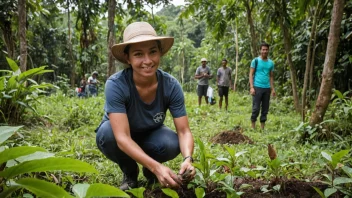Introduction
Are you craving a transformative experience that allows you to connect with your inner self while rejuvenating your spirit? Planning a wellness retreat focused on spiritual growth can be a fulfilling adventure that enhances your mental, emotional, and spiritual well-being. This guide will take you through the essential steps to create a memorable and impactful retreat experience.
Step 1: Define Your Intentions
Before you embark on planning your retreat, it’s essential to clarify your intentions. What are you hoping to achieve? Here are some questions to consider:
- Do you want to deepen your meditation practice?
- Are you looking for emotional healing or clarity in your life?
- Would you like to explore new spiritual practices or traditions?
Take some time to reflect on your goals, and write them down. This will help guide your planning process.
Step 2: Choose the Right Destination
The location of your retreat plays a crucial role in your experience. Look for destinations that resonate with your spiritual intentions. Here are some popular options:
- Bali, Indonesia: Known for its lush landscapes and vibrant spiritual culture.
- Sedona, Arizona: Famous for its stunning red rock formations and energy vortexes.
- Rishikesh, India: The birthplace of yoga, offering a deeply spiritual atmosphere.
Research each destination thoroughly, considering factors like accessibility, climate, and local culture.
Step 3: Set a Budget
Your budget will dictate many aspects of your retreat, including location, accommodation, and activities. Create a detailed budget that includes:
- Travel Costs: Airfare, local transportation, and any visa fees.
- Accommodation: Look for wellness resorts, retreat centers, or cozy lodges.
- Activities: Classes, workshops, and excursions.
- Food: Consider whether meals are included or if you’ll need to budget for dining out.
Be realistic about what you can afford while ensuring your retreat remains enriching.
Step 4: Create a Schedule
Draft a daily itinerary that balances structured activities and free time. A sample schedule might include:
- Morning: Meditation, yoga, or spiritual workshops.
- Afternoon: Nature walks, journaling, or group discussions.
- Evening: Reflection, sharing circles, or relaxation time.
Make sure to leave room for spontaneity and rest, as these can be just as important as scheduled activities.
Step 5: Find Qualified Instructors or Guides
Having knowledgeable and experienced instructors can significantly enhance your retreat experience. Look for:
- Certified yoga instructors or meditation teachers.
- Spiritual guides or facilitators with a strong reputation.
- Local practitioners who can enrich your understanding of the area’s spiritual traditions.
Reach out to potential instructors to discuss your vision and see if they resonate with your intentions.
Step 6: Promote Your Retreat
If you're planning to invite others to join you, it’s time to spread the word! Use various platforms to promote your retreat, such as:
- Social media channels (Instagram, Facebook, etc.)
- Your personal blog or website
- Local wellness centers or community boards
Be sure to include all necessary details, such as dates, location, costs, and how to register.
Step 7: Prepare for the Journey
As the date of your retreat approaches, take time to prepare mentally and physically. Here are a few tips:
- Pack appropriately for your destination’s climate and activities.
- Prepare your mind through meditation or journaling.
- Practice gratitude and openness to enhance your experience.
Being mentally prepared will help you make the most of your retreat.
Step 8: Embrace the Experience
Once you arrive at your destination, immerse yourself fully in the experience. Be present in every moment, engage with fellow participants, and remain open to new insights. Remember that the journey of spiritual growth is ongoing, and this retreat is just one step along that path.
Conclusion
Planning a wellness retreat focused on spiritual growth involves intentionality, thoughtful preparation, and a willingness to embrace new experiences. By following these steps—defining your intentions, choosing the right destination, setting a budget, creating a schedule, finding qualified instructors, promoting your retreat, preparing for the journey, and embracing the experience—you can create a transformative retreat that nourishes your spirit and enhances your well-being.
Remember to take this opportunity to connect with yourself and others, and allow the experience to unfold naturally. Happy travels on your spiritual journey!






